materials
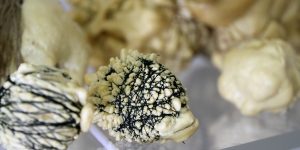
Material Moods
Studio Architecture III (CZ)
This ongoing investigation explores the natural behavior of materials and their possibilities of self-organization. The synthesis of robotic production and material performance lies at the center of a research project aiming to develop new and fluid-based construction composites.

Disrupted Sensations
AnneMarie Maes (BE)
A series of lightboxes containing smart materials and Scanning Electron Micrographs (SEM) of Honeybee parts and pollen grains. The artist studies the processes by which nature operates and how she can use these processes to create her own intelligent materials.
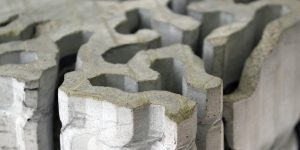
Platforms of Differential Growth
Studio Architecture III (CZ)
Design based on the algorithmic evolution of geometries represents machine production without need for human intervention. Such systems are capable of self-reproduction and self-reparation. The exhibited concrete elements are cut-outs of an endless structure.
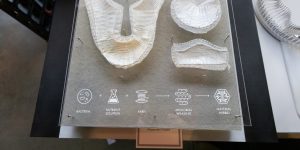
This is grown.
Jen Keane (US)
This is grown. was motivated by a frustration with plastics and a visible disparity between scientific research and design manifestations around natural materials. Taking an organism-driven approach to material design, the project began under the premise that a greater understanding of nature could help us not just replace the petrochemical based materials of today with more sustainable ones, but perhaps allow us to devise entirely new systems of making and categories of materials previously unimagined. After all, nature has had 3.8 billion years to perfect the ultimate circular economy: Life. Maybe we can still learn something.
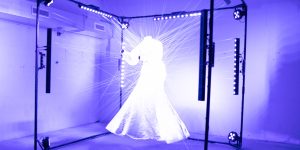
Modified Paradise: Dress
AnotherFarm (JP)
Modified Paradise is a series of sculptural works made from “luminescent silk” – created by genetically modified silkworms developed by adding the genes of glowing jellyfish and corals. The dress, which floats within a frame with no body, aims to encourage us to think about the extremes and limitations of the interaction between art, science, and technology.
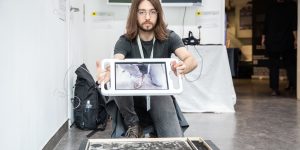
ARchaeologies
Pedro Soares (PT)
In Archaeologies, we’re faced with a sheet of paper in which an iconic picture from the past was engraved through folding. Observers may use the available materials to produce their own drawings while simultaneously revealing the hidden image. By observing the piece with an Augmented Reality app, we can see the strata that contain each individual citation made by the participants and how every new intervention is conditioned by the ones before it.

The Life of Crystals
Mónica Bate (CL)
Starting with the observation of piezoelectric crystals, the TLC project works at the crossroads of the natural and artificial, life and the machine, art and science. The experience aims to produce a poetic technogical re-purposing, where it can be seen as transformed natural matter for which humans play an evolutionary role.
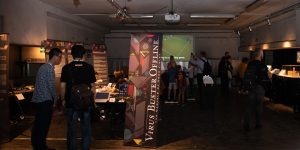
Device Art 2019
PhD. Program in Empowerment Informatics, University of Tsukuba
Device Art is a new form of art that brings out the essence of technology through new materials and mechatronic devices. This concept challenges the traditional paradigm of art by merging technology, art and design.
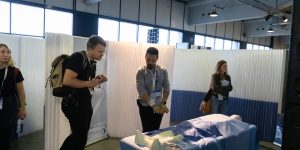
SimCath
Fernando Bello (MX), ICCESS & Salomé Bazin (FR), Cellule studio
How do surgeons prepare for an operation, when they know that the smallest mistake could be the line between life and death? That was the question Cellule faced when developing SimCath, a cardiology suite for simulation training. By training in a simulation environment, future surgeons have an opportunity to rehearse for complex surgery, performing common interactions between patients and clinicians in a low risk environment. Developing SimCath was reminiscent of building a theatre set, a stage which mimics the real surgical environment in such a way that the surgeons acting through their roles are immersed in the performance of surgery and the relationship between patients and clinicians.

Re-FREAM
STARTS Lighthouse
Re-FREAM is an invitation to artists and designers to re-think the future of fashion with state-of-the-art production technologies. Re-FREAM gives artists and designers access to new production technology, new materials, and know-how to co-create innovative fashion concepts in collaboration with scientists. Apply to the second call, opened on July 1, 2020.


